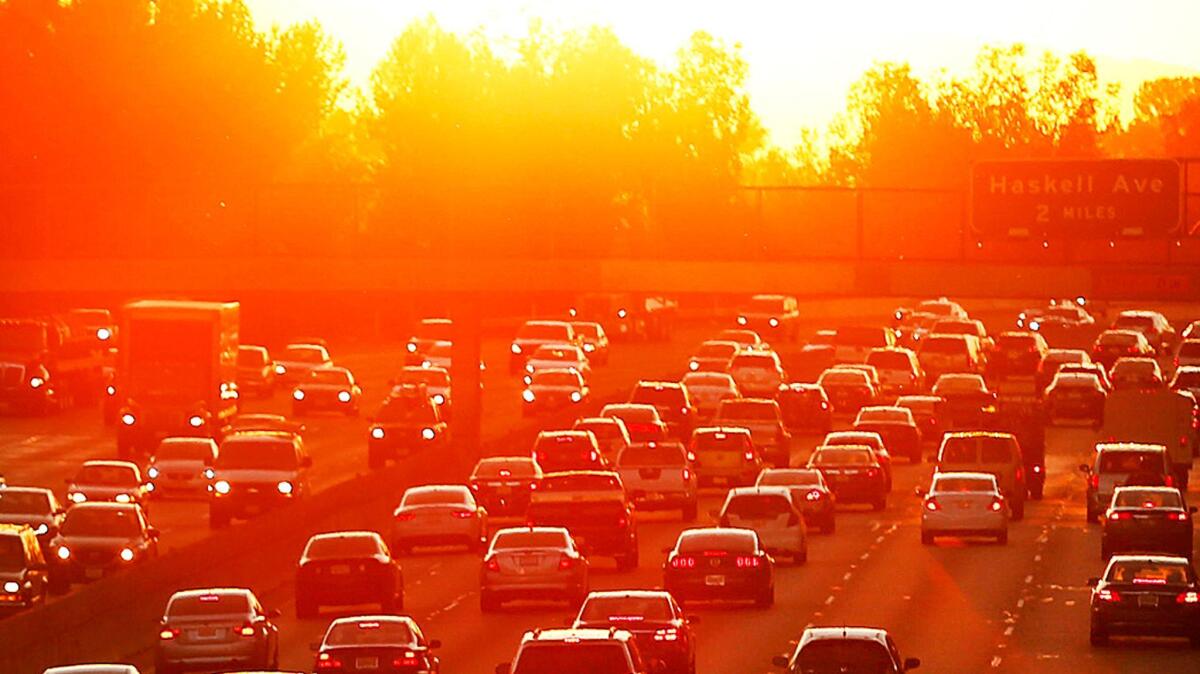The hottest year in history sees the election of a new president who questions climate science

Next month, the World Meteorological Organization is expected to declare 2016 the hottest year in recorded history — just as the United States prepares to inaugurate a president who questions whether climate change is real.
While the election of Donald Trump has stunned the world, record warmth no longer feels surprising.
After all, the current record was set only in 2015, breaking the record set in 2014. Not including 2016, the 16 warmest years since record-keeping began in 1880 have occurred since 1998. So goes climate change: another year, another ominous superlative.
The rising temperature is just one foreboding example of how climate change and other environmental issues rattled the world, and particularly the Western U.S., in 2016.
While the year began on a note of relative harmony after nearly 200 nations agreed to the landmark Paris climate accord at the end of 2015, it also brought an immediate reminder of division — the intransigent fight over public lands in the West.
On Jan. 2, Ammon and Ryan Bundy, claiming they were protesting land policies and the plight of two ranchers imprisoned for setting fire to federal land, led what became a 41-day armed standoff at the Malheur National Wildlife Refuge in eastern Oregon.
The standoff ended with one man killed by law enforcement and more than two dozen people arrested. In October, the story took a surprising turn when the Bundy brothers and five others were acquitted in federal court in Portland on conspiracy and weapons charges.
Fossil fuel industries faced challenges. The price of oil and gas stayed low most of the year, though nothing suffered like coal. Cities and Indian tribes along the West Coast fought off the construction of export terminals, while the bankruptcy of major coal companies raised questions about whether they would be able to fulfill their obligations to repair land they had mined.
Lots of ice melted. In the spring, a study found that, by the end of this century, sea levels could rise 6 feet or more if nothing is done to reduce carbon emissions — with much of the rise attributed to the melting of the West Antarctic ice sheet. By December, the focus was on the Arctic, where average sea ice had hit record lows and the mean high temperature neared 30 degrees above normal.
Drought continued in much of the West, and the federal Bureau of Reclamation did something it had never done: In August, it forecast a shortage of water on the Colorado River, which provides water to nearly 40 million people, including in California.
The forecast did not apply until 2018, and the bureau later clarified that there was only about a 50-50 chance it would happen. Still, it underscored that the trendline is not good and added motivation for water managers who are trying to broker a new plan to conserve water in the river’s largest reservoir, Lake Mead.
The wildfire season in the West was not as bad as it was in 2015, but it had its moments in California and elsewhere — Alaska, in particular, burned wide and fierce. There was also the blaze that raced across much of northern Alberta, Canada, in May, forcing the chaotic evacuation of more than 80,000 people from the oil town of Fort McMurray. In October, scientists found that climate change had nearly doubled the acreage in the West that had been burned by wildfire in the last three decades.
By the end of the summer, a relatively little-known issue leapt into the headlines: the fight over the Dakota Access pipeline. Thousands of Native Americans and others joined the Standing Rock Sioux Indian tribe near their North Dakota reservation to protest the pipeline, which was slated to be constructed under a dammed section of the Missouri River from which the tribe gets its drinking water.
Violent encounters with law enforcement led to more than 400 arrests — and accusations of police brutality. In December, the U.S. Army Corps of Engineers thrilled protesters and infuriated the company building the pipeline by announcing that it would explore other routes for the project.
By that point, Trump had been elected, throwing into question the fate of the pipeline and much of the rest of the environmental legacy President Obama set out to create toward the end of his second term.
Trump has said he wants to “cancel” the Paris climate accord, which took legal effect in November, and that he wants to roll back environmental regulations, revive the coal industry and greatly expand oil and gas development. He named prominent climate change skeptics to top cabinet positions, including to lead the Environmental Protection Agency and the Department of Energy.
Meanwhile, Obama pressed forward with a flurry of new regulations and conservation measures, not all of which are likely to survive under his successor.
Since election day, the Obama administration has finalized a rule to reduce methane emissions from energy production, protected land in Montana from oil and gas production, limited gold exploration near Yellowstone National Park and, perhaps most notably, banned new offshore drilling activity in almost all of the Arctic and much of the Atlantic. This week, the president set aside more than 1.65 million acres of land in Utah and Nevada as national monuments.
There may be a bit of good news in 2017: Scientists say next year likely will not be quite as hot as 2016 because short-term factors like the El Niño weather pattern will not overlay long-term warming.
Twitter: @yardleyLAT
ALSO
Child abuse in the military: Failing those most in need
Obama designates two new national monuments in the West
Why are thousands of geese dying in a toxic pit in Montana?
More to Read
Sign up for Essential California
The most important California stories and recommendations in your inbox every morning.
You may occasionally receive promotional content from the Los Angeles Times.










